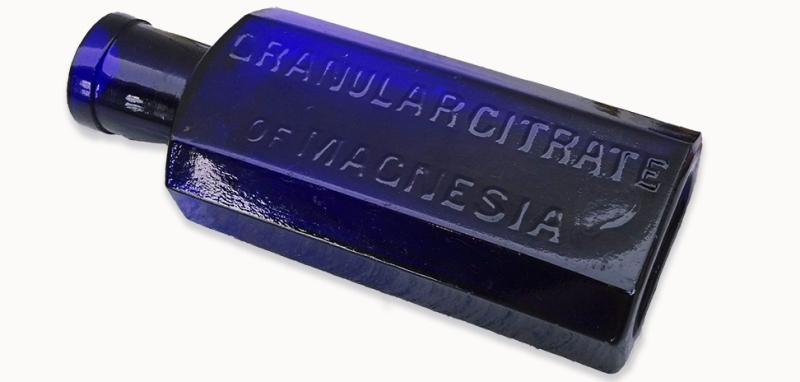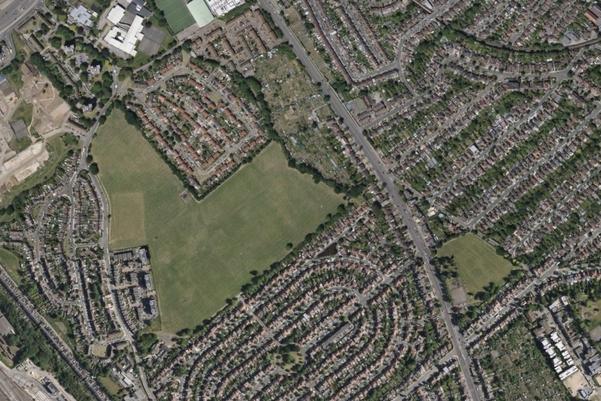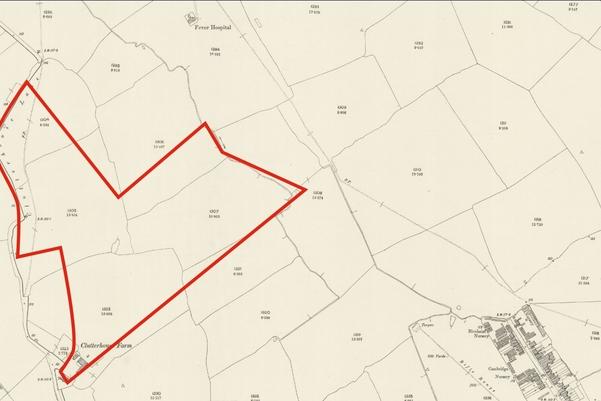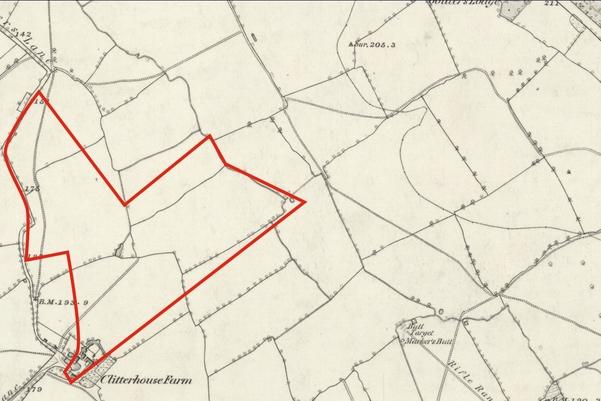From maps to dig at Clitterhouse Playing Fields
We have now completed our excavations at Clitterhouse Playing Fields, as part of plans for the new park being developed at Brent Cross Town. Here our archaeologists unearthed centuries of history, resting just a few feet beneath the ground.
Roman farmers
Our dig has revealed that during the Roman period (AD 43-410), the area was already being used for farming. We found several ditches, which separated different fields. Surviving fragments of Roman pots, bricks and tiles have helped us date these ancient boundaries. One of these ditches was part of a curved or circular enclosure and here we recovered a cow’s tooth, evidence for the presence of domesticated animals.
We also retrieved some plant and insect remains from the fill of the ditches, and they helped us reconstruct what the landscape looked like in Roman times. We identified buttercups and water fleas, usually found by ditches and ponds that would seasonally dry out.
Archaeology and old maps
People continued to grow crops and raise livestock for centuries at Brent Cross. Although now a part of London, historic maps have shown this area remained rural until quite recently. The current shape of Clitterhouse Playing Fields can be traced on maps of over 160 years ago, split over several fields which were later combined to form the park.
Before we started digging, the field was investigated by a geophysical survey. Geophysical surveys use a variety of tools to sense for walls, ponds or ditches that might be beneath the ground. These instruments register changes in magnetic strength and electrical conductivity or may use a radar to produce an image of what’s under our feet. They can help archaeologists understand where they should excavate.
One of the things registered by the geophysical survey carried out at Clitterhouse Playing Fields was a large magnetic anomaly. By checking the 1754 plan of the ancient manor of Hendon we found out this corresponded with the location of an old pond, later backfilled and now disappeared. The pond was investigated as part of the MOLA dig and it produced some of the best-preserved finds from the site.
Whilst railways have served the area since 1870 (when Cricklewood Station opened), this part of London maintained its rural character well into the 1920s. During World War II part of the park was turned into allotments and we found the remains of some of the concrete air raid shelters built at the time.
Snapshots from the past
We unearthed many different objects at Clitterhouse Playing Fields, some very old, others revealing peculiar stories from the near past.
One of the most interesting finds is dated to the Roman period. In one of our trenches we found a small fragment of a beaker produced in Cologne. Almost all Roman materials found on site were made fairly locally, however this pot shows how goods travelled all around the Roman empire, even reaching rural areas of Britain.
Our archaeologists also recovered many glass bottles dating to the Victorian period (1837-1901), most of them from the old pond. The majority were used for soft drinks, but among them was a far more sinister container – a poison bottle. Poison bottles had distinct shapes that changed based on what was inside them. This was so they could be recognised by touch even in the middle of the night, when candles were often the only source of light. It was important for people to correctly identify what they were looking for, to avoid ingesting the wrong liquid! Our blue-glass poison bottle was filled with ‘granular citrate of magnesia’, the name clearly stamped on its side. However, despite the deadly name given to its container, this substance was used to cure constipation. It can still be found on the shelves of health food shops!

Lastly, our archaeologists identified a rather ‘recent’ find – a German bayonet. This specific model was in use before and during WWI. How did this weapon end up in a park? Was it brought to London as a souvenir – or maybe a trophy – by a former English soldier? Or did it belong to a collector who discarded it after the war?
Not every archaeological dig uncovers beautiful mosaics, precious objects, or large buildings, but this doesn’t mean our discoveries are any less relevant in the story that they tell. Our dig at Clitterhouse Playing Field has unearthed the story of a community changing through times, as Roman fields slowly became part of a bustling city. This story now continues with the new regeneration plans. Who knows what future archaeologists will excavate here?
Clitterhouse Playing Fields are being regenerated as part of Brent Cross Town, a partnership between Argent Related and Barnet Council, managed by Galldris. If you are interested in the current plans for the Brent Cross Town development, find out more at https://www.brentcrosstown.co.uk/vision.


